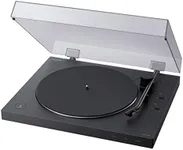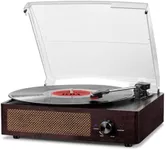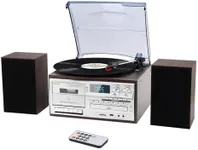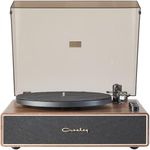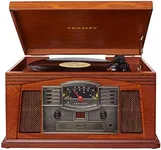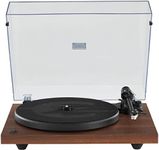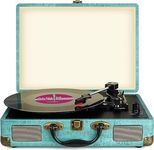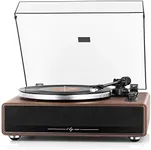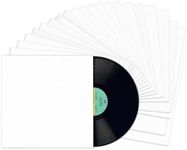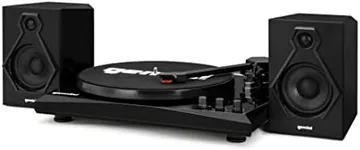Buying Guide for the Best Turntables With Bluetooth Rs
When choosing a turntable with Bluetooth, it's important to consider several key specifications to ensure you get the best fit for your needs. Turntables with Bluetooth offer the convenience of wireless connectivity, allowing you to stream your vinyl records to Bluetooth-enabled speakers or headphones. To make an informed decision, you should understand the various features and how they impact performance and usability.Bluetooth VersionBluetooth version refers to the specific iteration of Bluetooth technology used in the turntable. Newer versions, such as Bluetooth 5.0, offer better range, faster data transfer rates, and improved connectivity compared to older versions like Bluetooth 4.0. If you plan to use your turntable in a larger space or want the best possible connection quality, opt for a model with a newer Bluetooth version. For casual use in a smaller area, an older version may suffice.
Cartridge TypeThe cartridge is the component that holds the stylus (needle) and converts the grooves on the vinyl into an audio signal. There are two main types: moving magnet (MM) and moving coil (MC). MM cartridges are more common, easier to replace, and generally more affordable, making them suitable for most users. MC cartridges, on the other hand, offer higher fidelity and are preferred by audiophiles. Choose an MM cartridge for general use and an MC cartridge if you prioritize sound quality and are willing to invest more.
Drive TypeTurntables can have either a belt drive or a direct drive. Belt drive turntables use an elastic belt to spin the platter, which helps isolate the motor's vibrations and results in better sound quality. Direct drive turntables have the motor directly connected to the platter, providing more consistent speed and better torque, which is ideal for DJing. If you are a casual listener or audiophile, a belt drive turntable is a good choice. If you plan to use the turntable for DJing or need precise speed control, go for a direct drive model.
Built-in PreampA built-in preamp amplifies the signal from the turntable to a level that can be used by standard audio equipment. Some turntables come with a built-in preamp, while others require an external one. If you want a simple, plug-and-play setup, look for a turntable with a built-in preamp. If you already have a high-quality external preamp or plan to upgrade your audio system, a turntable without a built-in preamp might be a better option.
Speed SettingsTurntables typically offer different speed settings to accommodate various types of vinyl records. The most common speeds are 33 1/3 RPM and 45 RPM, which cover most LPs and singles. Some turntables also support 78 RPM for older records. Ensure the turntable you choose supports the speeds you need. If you have a diverse vinyl collection, a model with multiple speed settings is essential.
Platter MaterialThe platter is the part of the turntable that the record sits on. Platter materials can vary, with common options including plastic, aluminum, and acrylic. Heavier materials like aluminum and acrylic provide better stability and reduce vibrations, resulting in improved sound quality. Plastic platters are lighter and more affordable but may not offer the same level of performance. Choose a turntable with a heavier platter if sound quality is a priority.
Tonearm TypeThe tonearm holds the cartridge and stylus and guides them across the record. There are two main types: straight and S-shaped. Straight tonearms are simpler and often found on entry-level turntables, while S-shaped tonearms are designed to reduce tracking error and improve sound quality. If you are new to vinyl or have a basic setup, a straight tonearm will suffice. For better sound quality and reduced wear on your records, consider an S-shaped tonearm.
